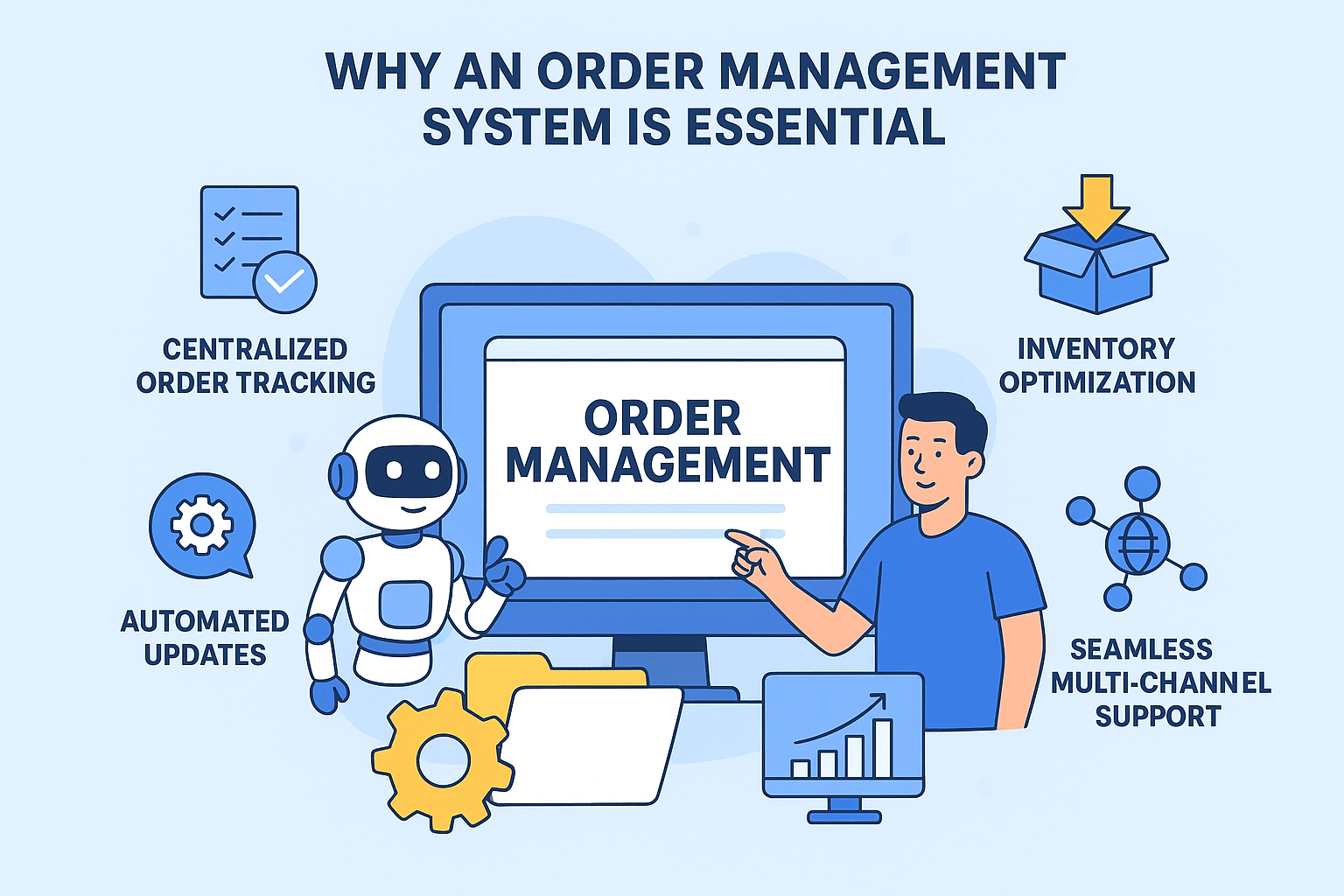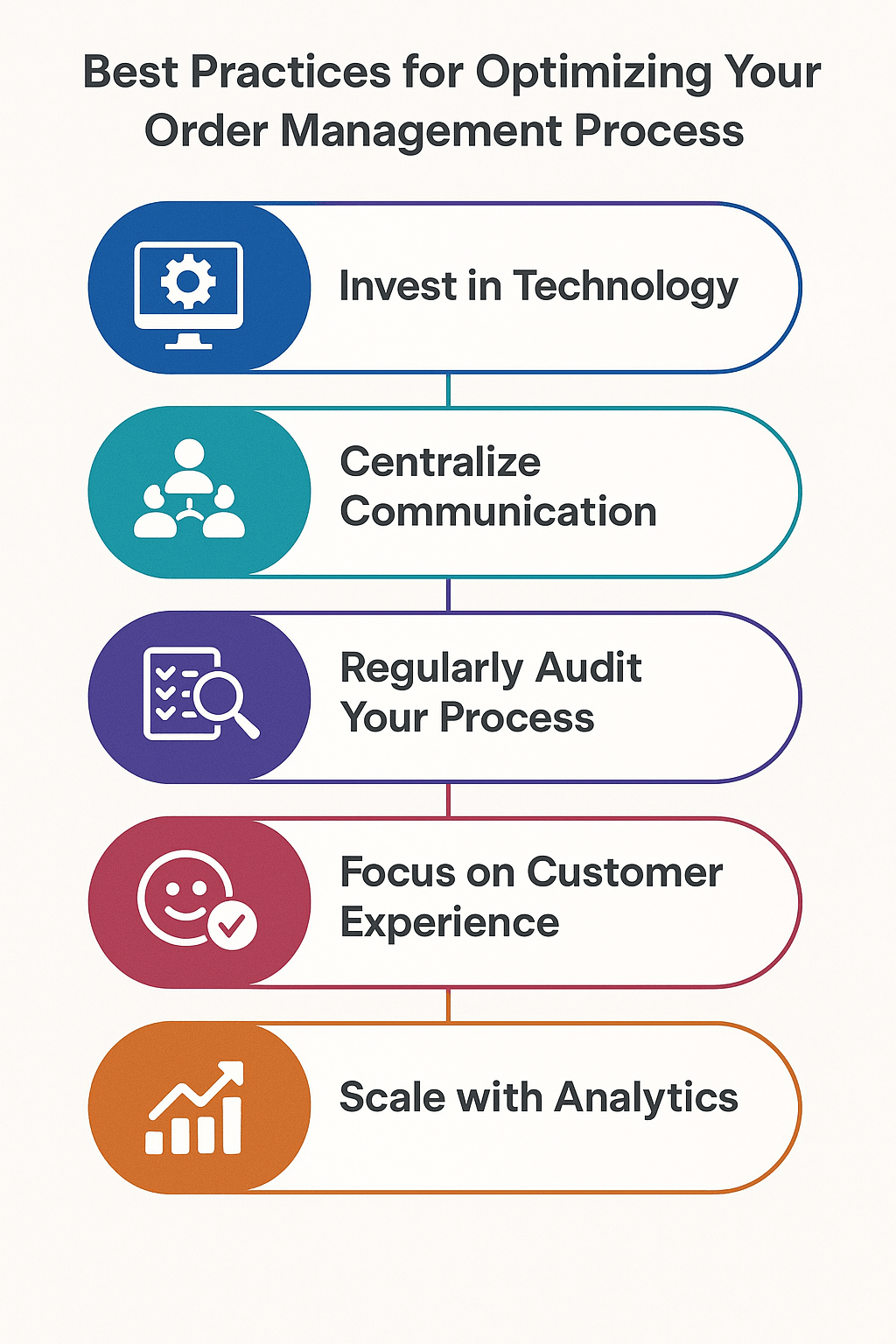Order Management Process Made Simple: What It Is & How to Manage Orders
Order Management
Managing orders efficiently is a cornerstone of any successful business, whether you run a small online store or a large eCommerce platform. Understanding the order management process not only helps streamline your operations but also ensures timely deliveries, happy customers, and optimized revenue. In this blog, we’ll break down what order management is, explore the order process, highlight essential tools like an order management system, and explain how businesses can effectively manage orders with confidence.
Also Read: https://ilsportal.io/blogs/order-dispatched-meaning
What is Order Management?
At its core, order management is the process of tracking, organizing, and fulfilling customer orders from the point of purchase to delivery. It involves coordinating various functions such as inventory, shipping, billing, and customer service. Many businesses rely on technology to simplify this process, which is where an order management system (OMS) comes into play.
An order management system helps automate and optimize the order process, ensuring that orders are fulfilled accurately and efficiently. With an effective OMS, businesses can reduce errors, improve delivery speed, and enhance the overall customer experience.
Primary Goals of Order Management:
- Track orders in real-time
- Ensure timely order fulfillment
- Maintain accurate inventory levels
- Simplify returns and exchanges
Understanding the Order Management Process
The order management process can be divided into several key stages, forming what is often called the order management cycle. Here’s a detailed look:
| Stage | Description | Key Considerations |
|---|---|---|
| Order Placement | Customers place orders through your website, app, or offline store. | Capture accurate customer details, product specifications, and payment information. |
| Order Processing | Verify and validate the order details. Check inventory availability and payment confirmation. | Ensure minimal errors and confirm stock availability. |
| Order Fulfillment | Picking, packing, and preparing the product for shipment. | Optimize warehouse workflow and reduce fulfillment time. |
| Shipping & Delivery | Dispatching the order and tracking it until delivery. | Partner with reliable logistics providers and provide tracking info. |
| Returns & Exchanges | Handling returns, replacements, or refunds if needed. | Establish clear policies to maintain customer trust. |
By following a structured order management cycle, businesses can not only manage orders efficiently but also reduce operational errors and improve customer satisfaction.
Why an Order Management System is Essential
An order management system eCommerce solution plays a vital role in automating the order process. It integrates with your website, inventory, and shipping partners to streamline operations.

Benefits of Using an OMS:
- Centralized Order Tracking: Track all orders from a single dashboard.
- Inventory Optimization: Prevent stockouts and overstock situations.
- Automated Updates: Send customers real-time order updates.
- Seamless Multi-channel Support: Manage orders from multiple sales channels, including Shopify, Wix, and marketplaces.
- Analytics & Reporting: Gain insights into order trends, peak sales periods, and customer behavior.
For businesses running on platforms like Shopify or Wix, integrating an OMS with ILS Portal can make order management even more seamless. The ILS Portal provides features such as GST-compliant invoicing, packing slips, real-time logistics tracking, and automated notifications, all in one platform. This integration helps businesses save time and reduce manual errors while keeping their customers informed at every stage of the order process.
Steps to Manage Orders Effectively
To manage orders efficiently, businesses must combine strategy, process, and technology. Here’s a practical approach:
-
Centralize Order Information
Use an order management system to consolidate orders from all sales channels. This ensures that nothing gets missed and enables better tracking throughout the order management cycle.
-
Automate Inventory Updates
Real-time inventory updates prevent overselling and stockouts, which are common issues in eCommerce. A robust OMS or integration with the ILS Portal helps automatically adjust stock levels as orders are processed.
-
Prioritize Orders
Categorize orders based on urgency, shipping location, or value. This ensures high-priority orders are fulfilled promptly, improving customer satisfaction.
-
Integrate Shipping Solutions
Connect your OMS with reliable logistics partners to automate shipping labels, track deliveries, and provide customers with tracking information.
-
Monitor Performance Metrics
Analyze metrics like order processing time, fulfillment accuracy, and return rates. Continuous improvement of the order management process helps optimize operations and reduce costs.
-
Ensure Compliance and Documentation
Maintain clear records of invoices, packing slips, and GST-compliant documents. The ILS Portal can generate these documents automatically, ensuring your business meets regulatory requirements without additional effort.
Key Roles and Responsibilities in Order Management
A successful order management process requires clear roles and responsibilities. Here’s a quick overview:
- Order Manager: Oversees the entire process and ensures smooth workflow.
- Inventory Specialist: Manages stock levels and coordinates with suppliers.
- Warehouse Staff: Handles picking, packing, and dispatching orders.
- Customer Service Team: Communicates with customers regarding order status, issues, and returns.
Understanding order management roles and responsibilities ensures accountability and reduces delays in the order process.
Also Read: https://ilsportal.io/blogs/order-fulfillment-a-complete-guide
Best Practices for Optimizing Your Order Management Process
- Invest in Technology: Use an order management system or platforms like ILS Portal for automation.
- Centralize Communication: Keep all teams updated in real-time about order status and customer queries.
- Regularly Audit Your Process: Identify bottlenecks, errors, and areas for improvement.
- Focus on Customer Experience: Ensure timely updates, transparent policies, and smooth returns.
- Scale with Analytics: Use data to forecast demand, manage inventory, and improve fulfillment strategies.

By following these practices, businesses can effectively manage orders, minimize errors, and deliver a superior customer experience.
Looking for tips on writing addresses correctly? Check out this guide on how to write an address on an envelope from the ILS Portal. It explains the correct courier address format to ensure your orders are delivered smoothly without delays.
Conclusion
Understanding what is order management and implementing a structured order management process is essential for any business aiming to scale efficiently. An order management system, especially when integrated with solutions like ILS Portal, can streamline operations, improve accuracy, and enhance customer satisfaction.
Whether you run a small eCommerce store or a multi-channel enterprise, mastering the order process ensures that you can manage orders effectively, maintain trust, and boost operational efficiency.
FAQs About Order Management Process
1. What is order management?
Order management is the process of tracking, organizing, and fulfilling customer orders from purchase to delivery. It ensures accurate inventory management, smooth order processing, timely shipping, and customer satisfaction. Using an order management system makes this process faster and more efficient.
2. What is the order management process?
The order management process involves several key stages: order placement, order processing, order fulfillment, shipping & delivery, and handling returns or exchanges. Following a structured order management cycle helps businesses manage orders efficiently and reduce errors.
3. How does an order management system help businesses?
An order management system eCommerce automates inventory updates, centralizes orders from multiple channels, generates invoices and packing slips, tracks shipments, and provides real-time order updates to customers. Integrating with solutions like the ILS Portal further streamlines logistics and documentation.
4. How can I effectively manage orders in my eCommerce store?
To effectively manage orders, businesses should centralize order information, automate inventory updates, prioritize orders, integrate shipping solutions, monitor performance metrics, and maintain compliance with invoices and packing slips. Tools like an order management system and ILS Portal simplify these tasks.
5. Can I integrate an order management system with Shopify or Wix?
Yes! Many order management systems can integrate with eCommerce platforms like Shopify and Wix. For example, integrating with the Indian Logistics Services Shopify app allows automated invoice generation, packing slips, logistics tracking, and multi-channel order management.

